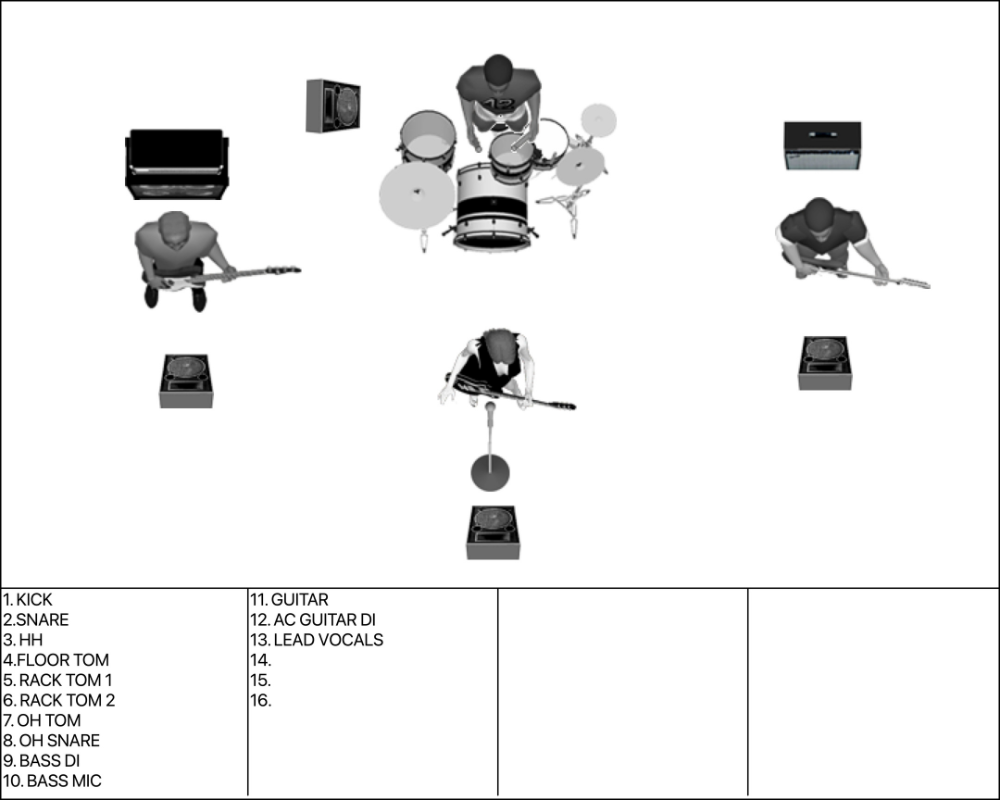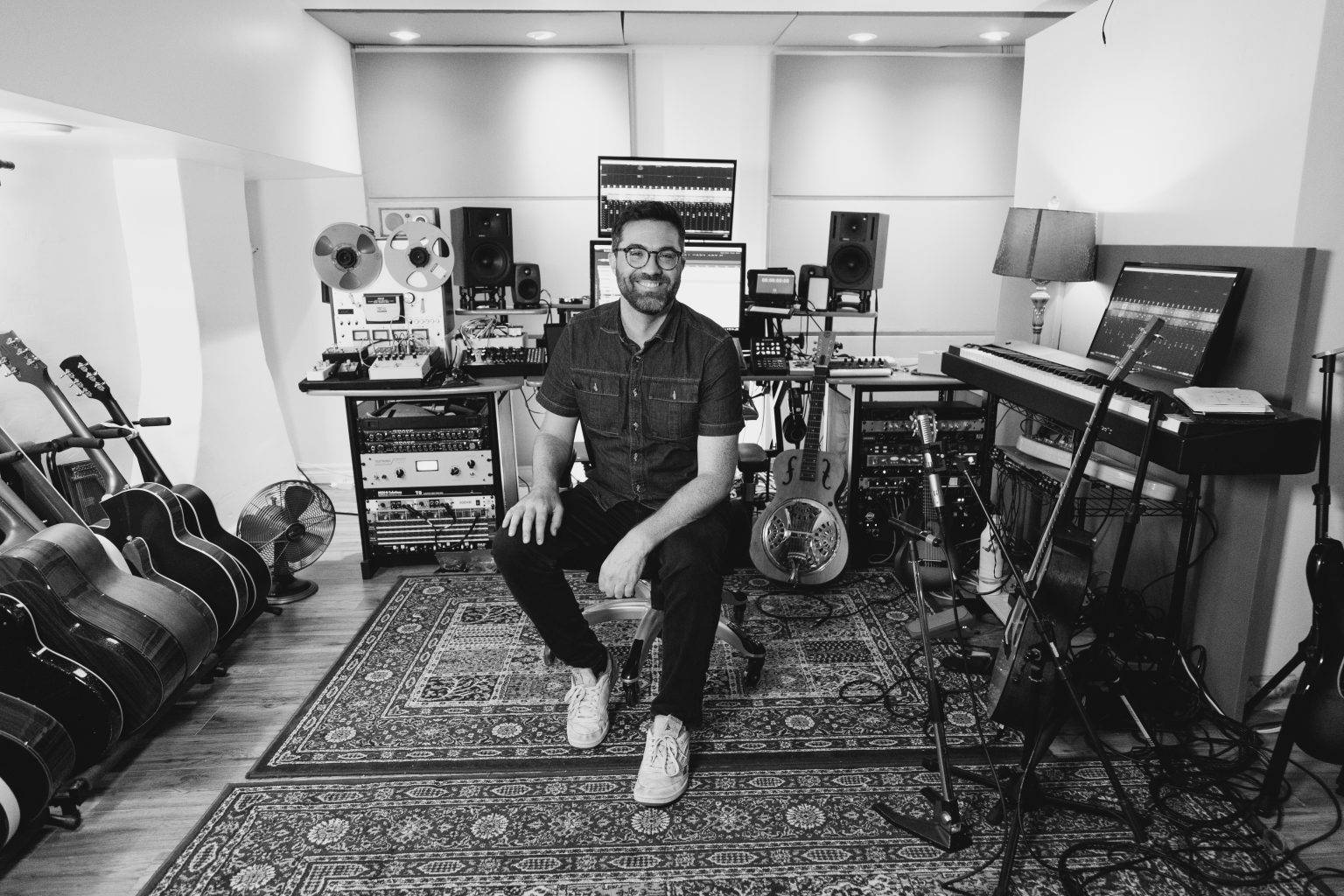When you walk onto a stage, you’re stepping into a small ecosystem. There are cables, microphones, monitors, amps, lights, and usually a few highly caffeinated sound engineers trying to make everything work together. A stage plot is the map that keeps that ecosystem from falling into chaos.
I recently sat down with multi Juno award-winning audio engineer Patric McGroarty, who has mixed everything from symphony orchestras to Sesame Street, to talk about what makes a great stage plot and why every performing songwriter needs one.
What is a stage plot?
A stage plot is a simple diagram that shows how your band or solo setup is arranged on stage. It tells the venue or sound engineer where each performer will be, what gear they’re using, and how everything connects.
It’s drawn from the audience’s perspective, so the front-of-house engineer can picture your setup exactly as they’ll see it.
Patric explains it as “the layout and schematic of your performance in relation to the audience.” It sounds technical, but it’s really a communication tool. It tells the venue: Here’s who we are, what we’re bringing, and what we need to make it work.
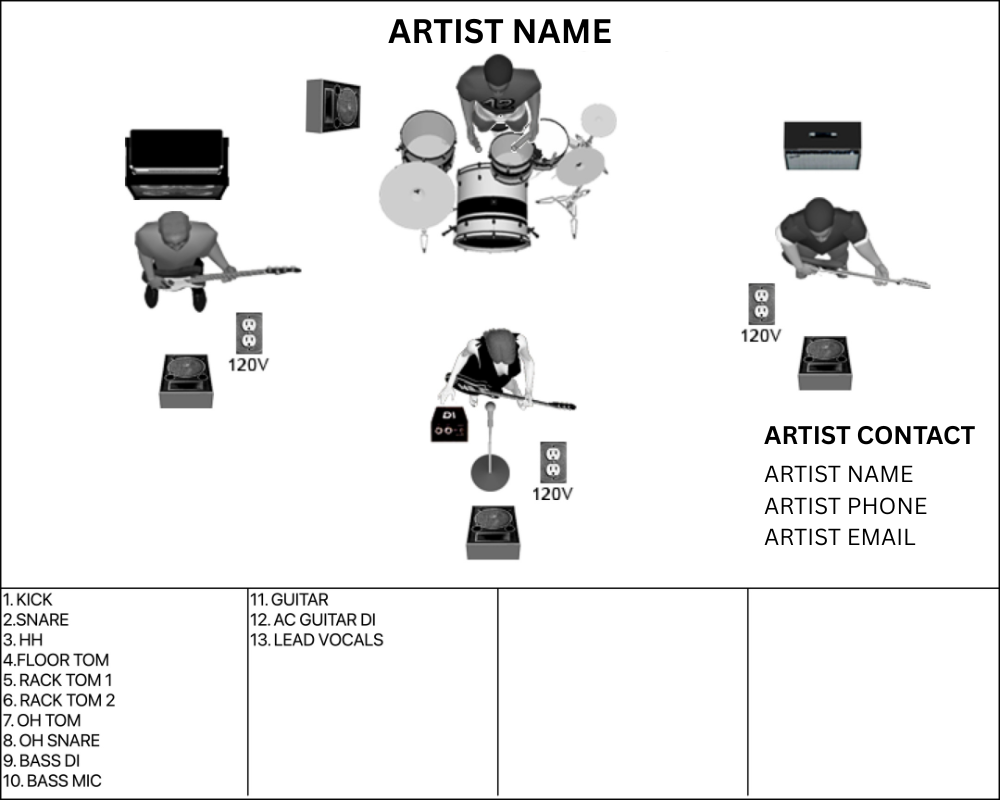
What NOT to include
Patric’s first rule: less is more.
“You don’t need to include everyone’s names,” he says. “If the bass player subs out, the new player doesn’t match the old name anyway. Now the engineer’s yelling ‘Gary!’ into the void.”
Skip long descriptions of instruments too. Unless your setup is unusual like a double-DI upright bass with switching pedals, keep it simple: acoustic guitar DI, keyboard mono out, vocal mic left.
A cluttered stage plot confuses people. A clean one makes everyone’s job easier and faster.
What TO include in your stage plot
At minimum, your stage plot should include:
- The position of each performer and instrument
- All microphones, DIs, and monitors
- Power requirements (for example, 120V outlets)
- Your contact information (name, email, phone)
- The date or year, so people know it’s current
Patric laughs that the most-forgotten detail is the artist’s name on the plot itself. “Everyone names the file after themselves but forgets to label the document. Put your name right on the page.”
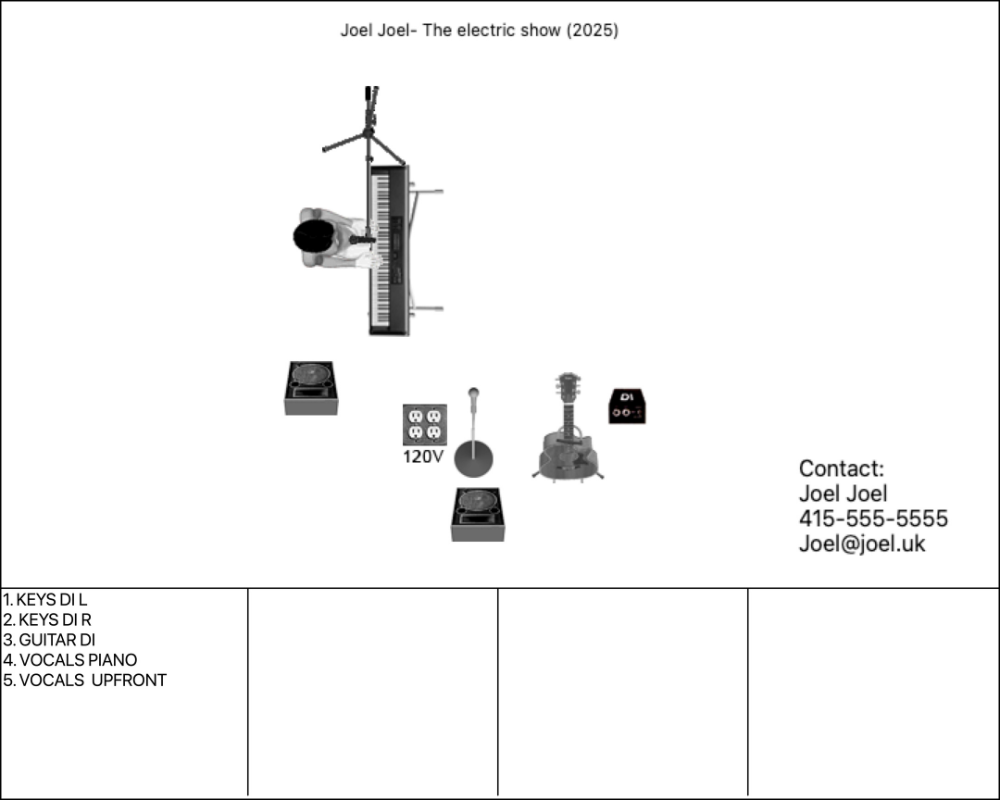
Example: the solo keyboardist
In the workshop, Patric built a sample stage plot for pianist Carla. Her setup was simple: keyboard and vocals, but even that benefits from clarity.
He added:
- One keyboard (mono DI out)
- One vocal mic (on her left)
- Two floor monitors in front
- Power outlets labeled 120V
If she adds a full band later, the same document can easily grow with her.
Patric uses StagePlot Pro. The software lets you drag and drop icons for instruments, mics, and monitors, and export your setup as a clean one-page PDF ready to send to any venue, however, there are several options out there.
The small box that can save your gig
If you’ve ever plugged your keyboard or guitar directly into a PA and heard buzz, hum, or nothing at all, you’ve met the problem a DI box solves.
Patric’s advice is simple: don’t rely on the venue to have one. Bring your own passive DI box. They’re inexpensive, reliable, and guarantee your instrument works anywhere you play.
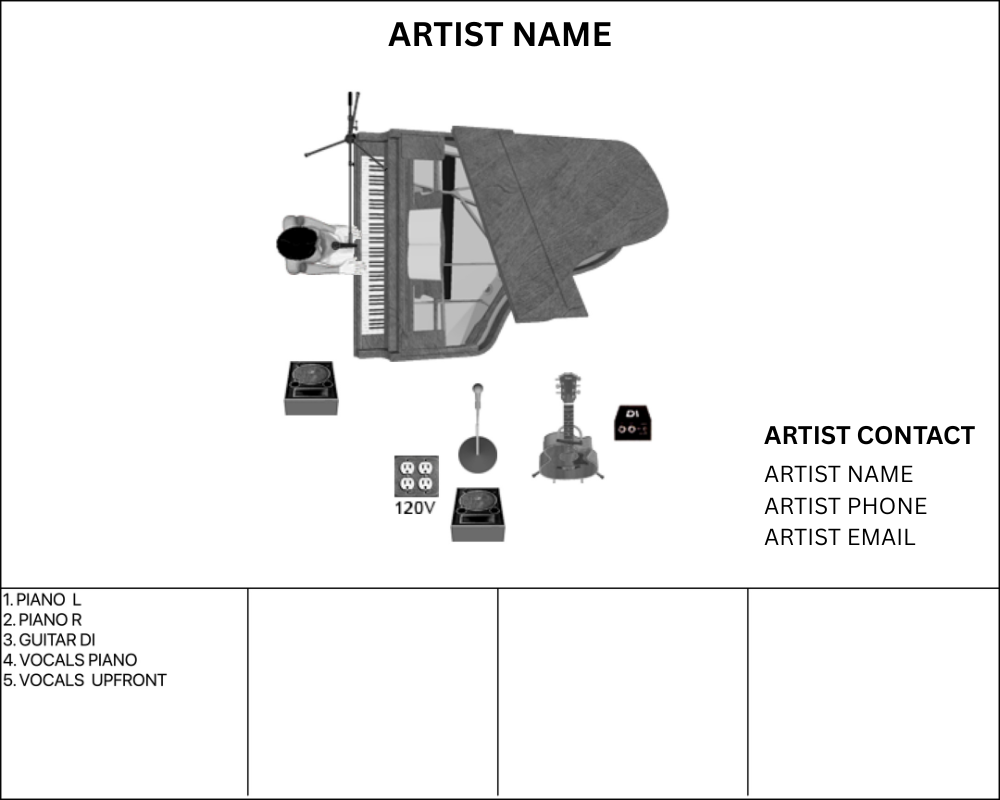
How much detail do you need?
For small club gigs, simplicity is your best friend. Label your channels something like this:
- Kick
- Snare
- Hi-hat
- Rack tom
- Floor tom
- Overheads
- Bass DI
- Electric guitar
- Acoustic guitar DI
- Keys DI
- Vocals
For larger shows or festivals, you can expand this with an input list that specifies microphones, stands, or extra power drops.
Patric notes that major productions often go further, numbering even stools, amps, and cables. The goal isn’t perfection, it’s clarity.
Why stage plots matter for festivals and quick changeovers
At festivals where multiple bands share the same stage, clear communication is gold. A stage plot helps engineers patch and check your setup in minutes instead of guessing.
These are typically “throw and go” situations, where there’s little time to soundcheck between acts. You might not get your ideal setup, but having a clear, labeled stage plot gives you the best shot at sounding good fast.
Even small venues appreciate this professionalism. It signals that you respect their workflow and care about your sound.
Pro tips for great stage plots
- Keep everything on one page: stage layout, input list, and contact info.
- Number your inputs left to right, starting with drums.
- Place stereo instruments on odd-numbered channels (15/16, not 16/17) so they can be easily linked on a mixing console.
- Save your stage plot as a PDF and store it in the cloud (Google Drive, Dropbox, etc.) so you can share a link instantly.
- Update it when your setup changes and delete outdated versions
Final thoughts
A professional stage plot tells the venue you’re organized, prepared, and serious about your craft. It reduces confusion, saves time, and helps your live sound team do their best work.

